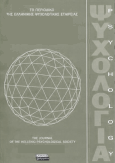The imaginary audience and the personal fable in relation to the separation-individuation process during adolescence

Abstract
Lapsley’s (1993) “New Look” model for the interpretation of adolescent
egocentrism, as an alternative to the classic cognitive one formulated by Elkind (1967), was tested in this study. According to the “New Look” model, the two manifestations of adolescent egocentrism – the imaginary audience and the personal fable – are adaptive coping mechanisms used by adolescents in their attempt to deal with the stressful developmental aim of separation-individuation. Two-hundred ninety seven adolescents 11-18 years’ old completed the Imaginary Audience Scale (Elkind & Bowen, 1979), the New Imaginary Audience Scale (Lapsley, Fitzgerald, Rice, & Jackson, 1989), the Personal Fable Scale (Elkind, personal communication, August 10, 1993), the New Personal Fable Scale (Lapsley et al., 1989), and the Separation-Individuation Test of Adolescence (Levine, Green, & Millon, 1986; Levine & Saintonge, 1993). The “New Look” model was generally supported by the data. The various dimensions of separation were significantly associated with the imaginary audience, whereas the dimensions of individuation had stronger links with the personal fable. In addition, some associations were found between the imaginary audience and individuation, as well as between the personal fable and separation. Consistent age and gender differences in the variables studied were found. Results are discussed in the framework of the literature on adolescent egocentrism and on parent-adolescent relations.
Article Details
- How to Cite
-
P. Galanaki, E., & Christopoulos, A. (2020). The imaginary audience and the personal fable in relation to the separation-individuation process during adolescence. Psychology: The Journal of the Hellenic Psychological Society, 18(1), 85–103. https://doi.org/10.12681/psy_hps.23710
- Issue
- Vol. 18 No. 1 (2011)
- Section
- RESEARCH PAPERS

This work is licensed under a Creative Commons Attribution-ShareAlike 4.0 International License.
The journal PSYCHOLOGY adopts a Platinum open-access policy. Submission, processing or publication costs are waived by the Hellenic Psychological Society. Papers published in the journal PSYCHOLOGY are licensed under a 'Creative Commons Attribution-ShareAlike 4.0 International' licence. The authors reserve the copyright of their work and grant the journal the right of its first publication. Third-party licensees are allowed to use the published paper immediately after publication as they wish, provided they retain the defined by the license copyright formalities, regarding the reference to its author(s) and its initial publication in the journal PSYCHOLOGY. Moreover, any adjusted work should be shared under the same reuse rights, so with the same CC license.



